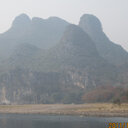Antiangiogenic therapy using endostatin increases the number of ALDH+ lung cancer stem cells by generating intratumor hypoxia.
Sleutelwoorden
Abstract
Antiangiogenic therapy is becoming a promising option for cancer treatment. However, many investigations have recently indicated that these therapies may have limited efficacy, and the cancers in most patients eventually develop resistance to these therapies. There is considerable recently acquired evidence for an association of such resistance with cancer stem-like cells (CSLCs). Here, we used xenograft tumor murine models to further suggest that antiangiogenic agents actually increase the invasive and metastatic properties of lung cancer cells. In our experiments with murine lung cancer xenografts, we found that the antiangiogenic agent endostatin increased the population of ALDH+ cells, and did so by generating intratumoral hypoxia in the xenografts. We further showed endostatin to cause an increase in the CSLC population by accelerating the generation of tumor hypoxia and by recruiting TAMs, MDSCs and Treg cells, which are inflammatory and immunosuppressive cells and which can secrete cytokines and growth factors such as IL-6, EGF, and TGF-β into the tumor microenvironment. All these factors are related with increased CSLC population in tumors. These results imply that improving the clinical efficacy of antiangiogenic treatments will require the concurrent use of CSLC-targeting agents.





